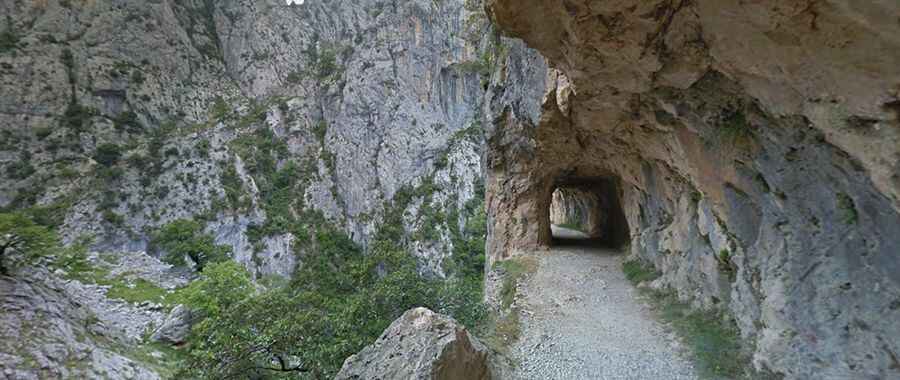Ruta del Cares
Located within the Picos de Europa mountain range, in northern Spain, Ruta del Cares, also known as Senda del Cares, is one of the most breathtaking trekking trails that can be done in Europe. Be careful if you have vertigo!

Nestled between the provinces of Leon and Asturias, in the northern part of the country, this old mule track is 11km long one way with 73 tunnels. It runs along caves, bridges and pathways sculpted in the rock and links the small towns of Puente Poncebos and Posada de Valdeón, running through the Cares Canyon, also known as The Divine Gorge.
The track was built between 1916 and 1921 to provide maintenance, food and supplies to the hydroelectric powerplant of Camarmeña. It was also the only way to reach both towns during the snow seasons in the winter. From 1945 to 1950, the path was improved to build water channelling and supply the Poncebos hydroelectric power station. This route is famous for its views and the narrowness of the path, which crosses an impressive defile. With rock on one side and the precipice on the other, it has a width that goes from 1 to 3 meters.
It is one of the most famous routes in the Picos de Europa National Park. The gorge is incredible with dramatic views of the limestone rock shooting up into the sky. The surface of the track along the Cares river's canyon is rocky. Eleven men died during the construction of the path. It was built based on peaks and dynamite. In recent decades some streches have been improved in order to make sure of a route with less risks. It has a duration of 3-4 hours aprox. In summer, especially July and August, and Easter, it can be overwhelming. More than 200,000 people visit it each year. The trail goes on the edge of the mountain from one village to another, while offering stunning views all along, carved directly in the side of the mountain at times.
A minimum of physical shape and good shoes are required. It can be very dangerous and yu must be very careful about the cliffs. High risk of rock slides. At least six people have died between 2001 and 2018. It’s pretty narrow, precipice on one side and no railings and bridges are not great allies for people with vertigo.